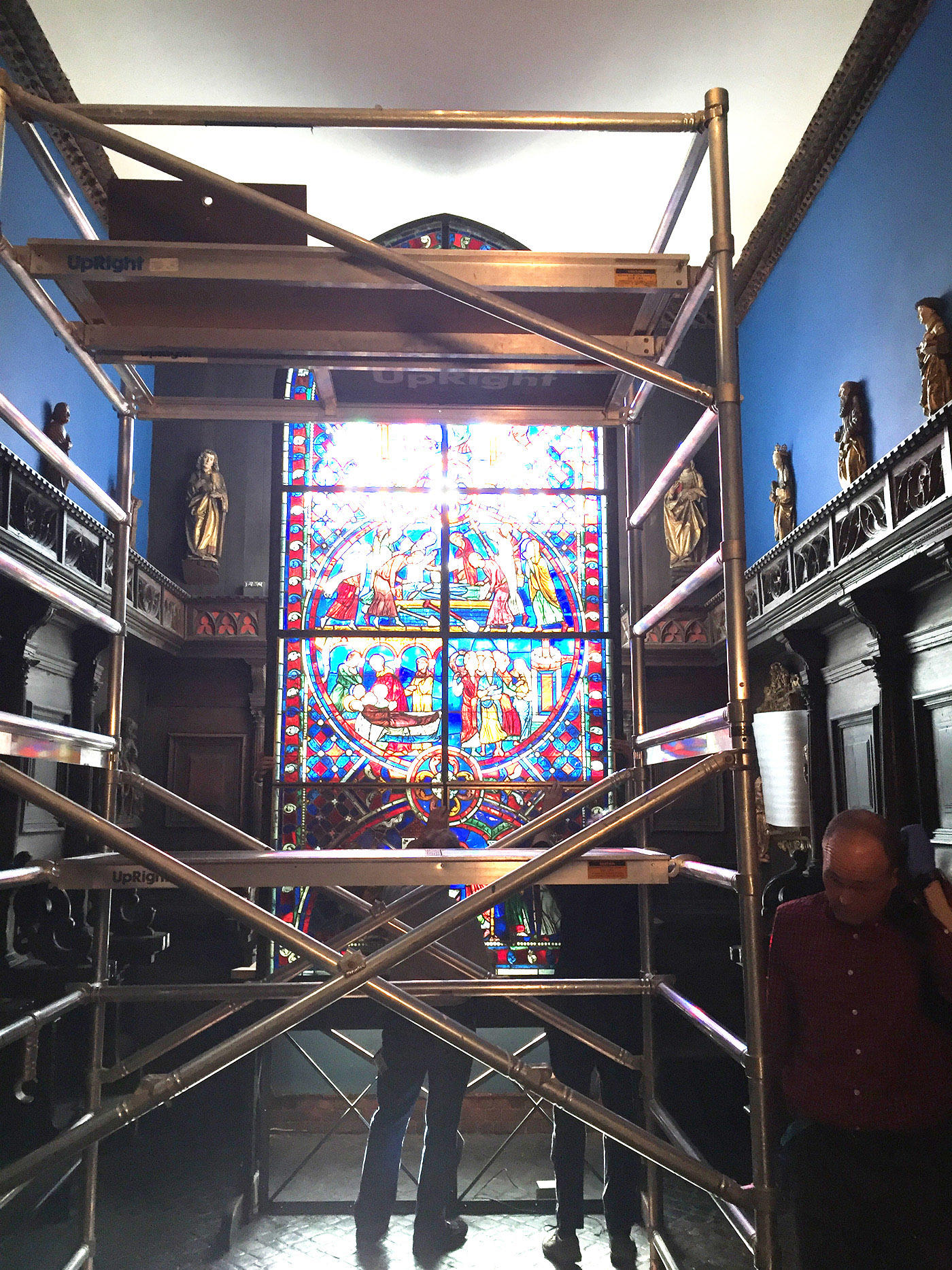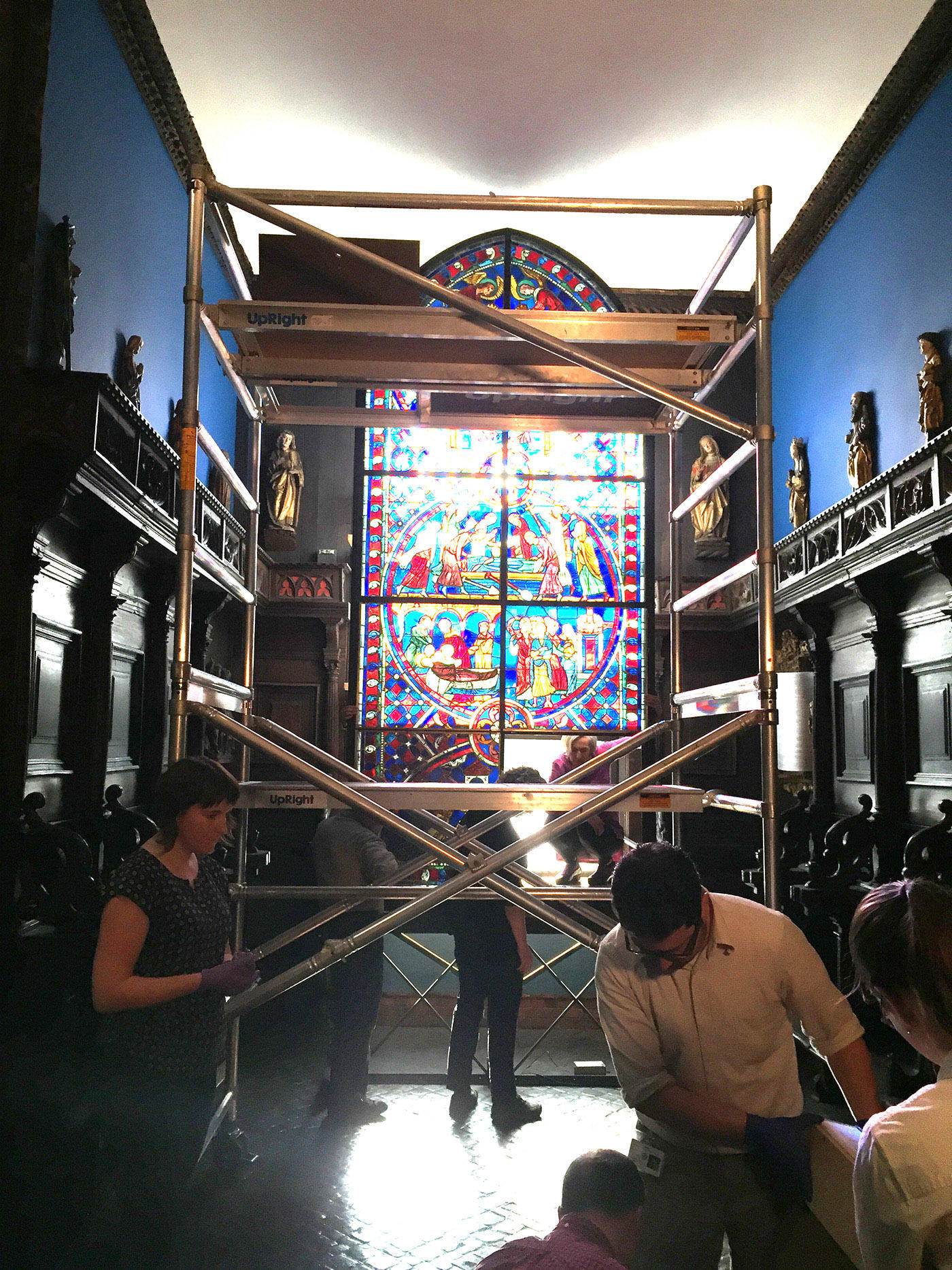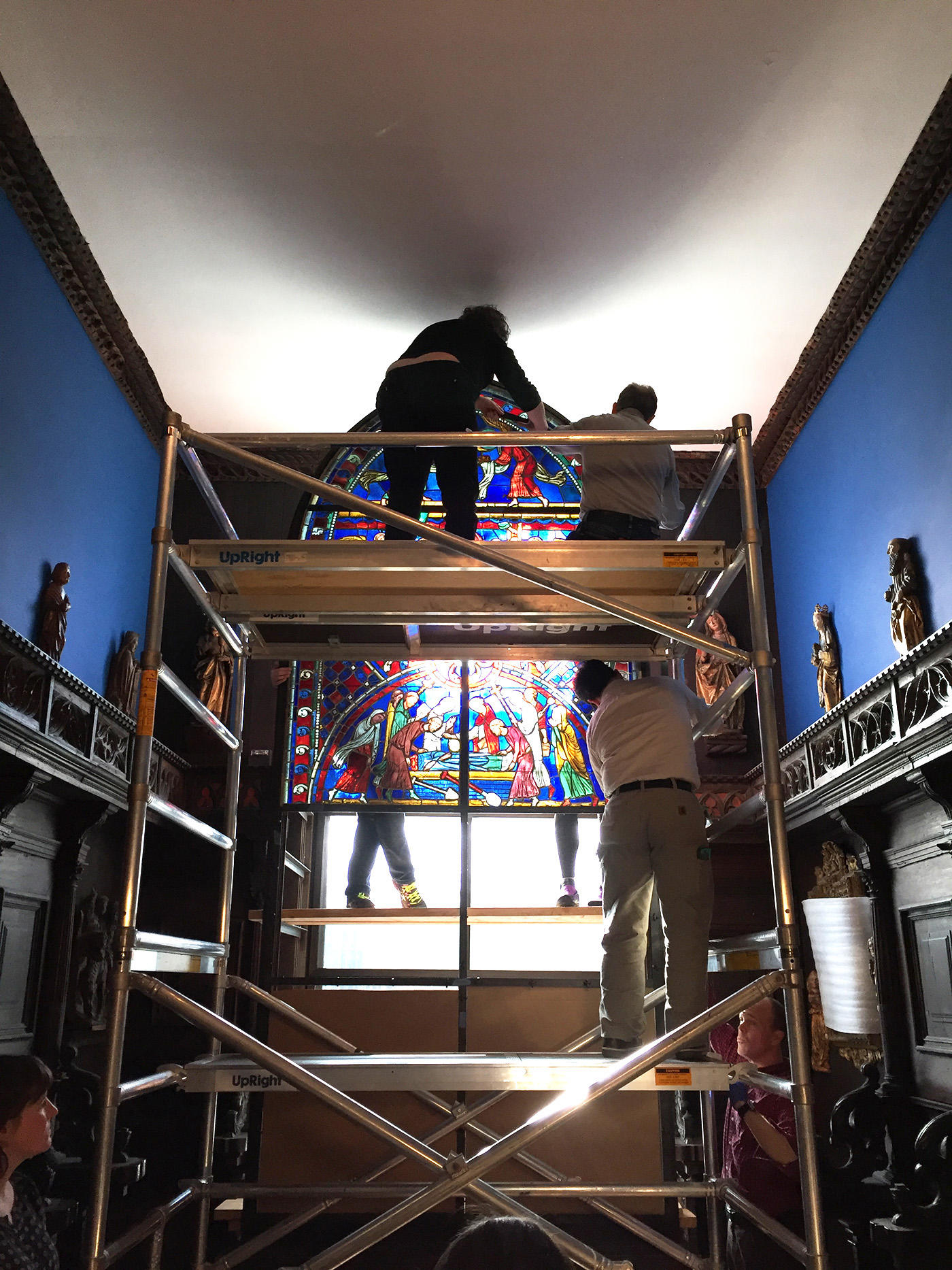One of the most foremost responsibilities of any museum is caring for its collection, in whatever form it takes. The Isabella Stewart Gardner Museum takes this responsibility very seriously, especially since its founder tasked us with maintaining the collection for the ‘education and enjoyment of the public forever.’
Every object has a different set of challenges when it comes to preservation, some of which are based on its material, size, susceptibility to environment, and age. In 2015, as part of a larger historic preservation project, one of the Gardner’s largest and most fragile objects was temporarily de-installed for its protection. The Soisson stained glass window—considered to be the finest example of 13th century French stained glass in America—typically occupies the back wall of the Chapel on the third floor of the historic building. It is an impressive work of art that required an equally remarkable effort to safely remove, store, and return it to view.
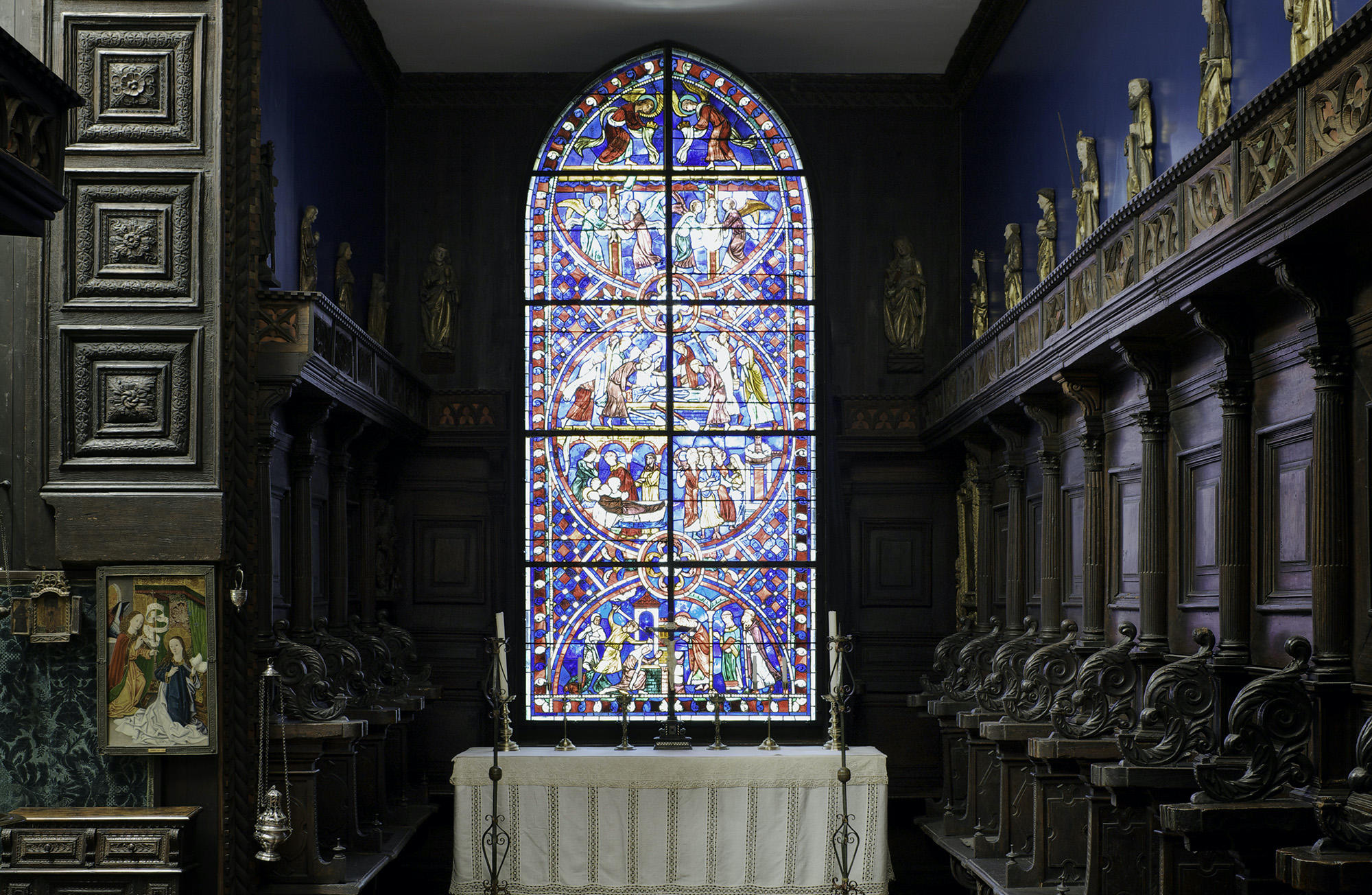
French, Soisson Window with Scenes from the Lives of Saints Nicasius and Eutropia, about 1205, in the Chapel
Photo: Sean Dungan
At more than 800 years old, the Soisson window has lived a long life. With age comes experience, and it’s a wonder that stained glass this old has managed to survive as long as it has. In order to ensure that the window will be around for many more years, it required a team of ten staff members to safely move it.
Working from the bottom up, we removed the individual stained glass panels from their armature (built in 1925 by the Conway-Cannon Co. of Boston). Thanks to the team’s experience—as well as the ingenious construction of the armature—we encountered no challenges in removing the panels, which isn’t to say the experience wasn’t a bit harrowing to undertake!

Detail of the back of the Soisson window showing the armature, 2014
We then documented the panels and packed them carefully into individual wooden crates with ample foam padding. We kept the panels vertical at all times during their removal, storage, and reinstallation in order to alleviate stress on the expertly leaded glass.

Detail of a scene from the Soisson Window
It’s hard to say whether knowing we weren’t the first (or likely the last) to undertake removing a stained glass window brought us comfort or just a bit of empathy for those who have performed the same task in the past and will do so in the future. Throughout the ages many houses of worship have been forced to move their stained glass into storage due to its fragility, although more often as protection from man-made damage. For instance, after the outbreak of World War I, technicians removed the principal window at York Minster and transferred it to bomb-proof shelters nearby. Funds to reinstate the window were raised after the war and the windows were returned. Unfortunately, the work was completed shortly before the outbreak of World War II, and the windows were removed once again.
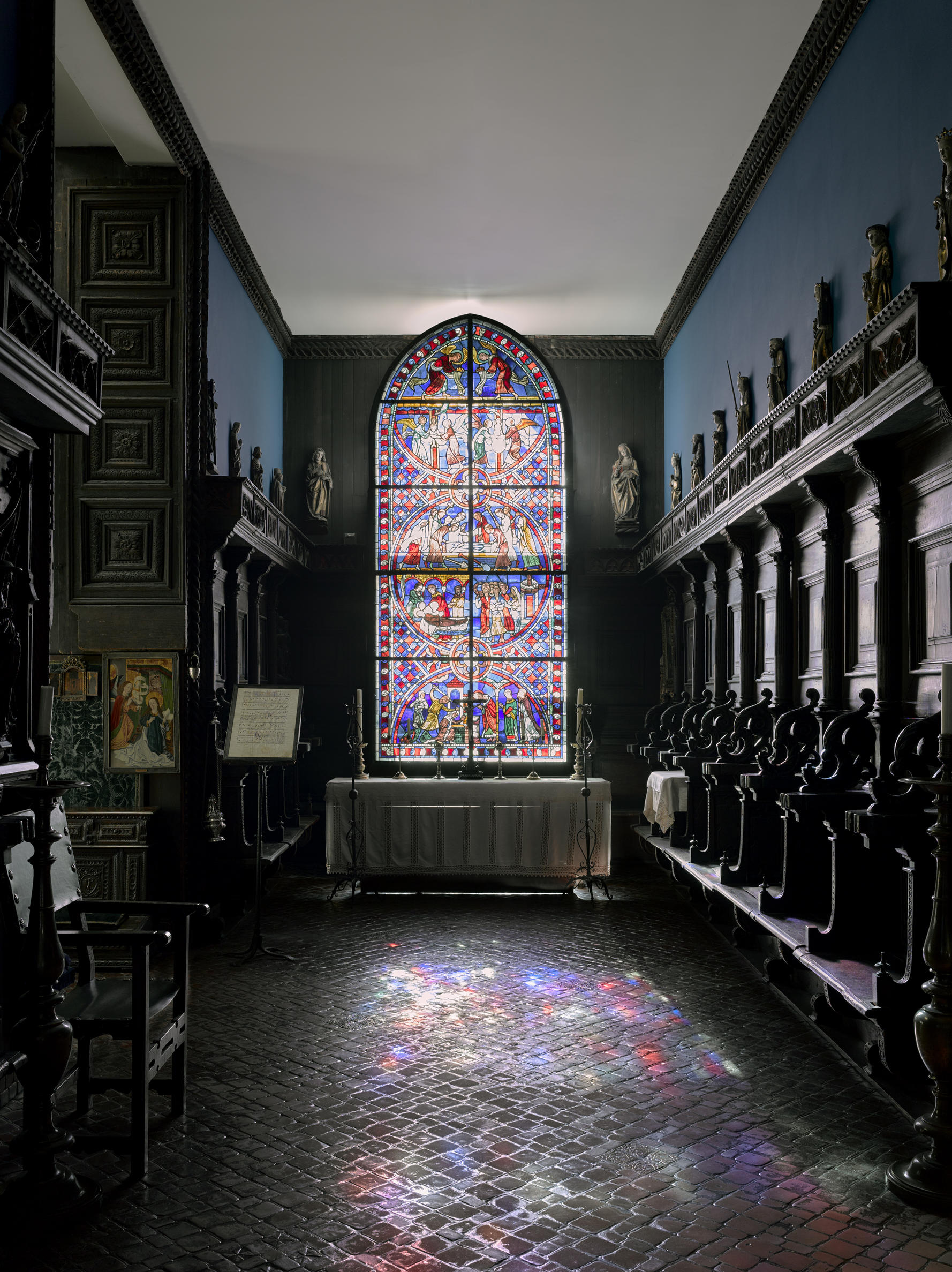
French, Soisson Window with Scenes from the Lives of Saints Nicasius and Eutropia, about 1205, in the Chapel in late afternoon
Photo: Sean Dungan
In France, the Soisson window survived Huguenot attacks, the French Revolution, and World War I bombardments. Thanks to Museum staff, it has been equally safe in its Boston’s home, where visitors can admire it today.
YOU MIGHT ALSO LIKE

Read more on the blog
Bordeaux Portal: Unpinning a Capital

Learn More
Conservation at the Gardner

Read more on the blog
The Largest Mirror
